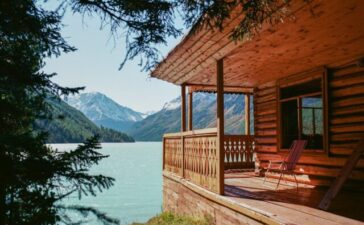Owning a large backyard provides a number of possibilities. You can set up your own playing ground, build your own mini Golf Course or set up a pool. Having a pool in your backyard provides you with a great way to cool off when it gets warm. If you’re thinking about installing a residential pool, be it in-ground or above-ground, one of the most important things to check off your to-do list first is to ensure that your chosen piece of land is fit for the project.
Although you don’t have to complete the process of preparing the land yourself, being familiar with it can help you oversee the entire operation and guarantee that everything is going well.
Here are the appropriate measures you need to take when preparing the land for pool installation:
- Pick a reputable building team
No matter how many do-it-yourself pool installation videos you watch online, you can’t measure up to the expertise and experience that professional pool builders have earned throughout their careers. Primarily composed of contractors, engineers, and workers, an excellent pool installation team will be sure to prime your chosen land area properly before doing anything else.
Hire a team that can build you a leveled pool by ensuring that its members have the following characteristics:
- Well-established
- Skilled
- Reliable
- Professional
- Hard-working
Finally, a great team of pool builders would also answer questions like, “Are there any pool supplies near me?”
- Inspect the area
You probably wouldn’t consider installing a pool if you didn’t think that your home has enough space for it. Although that may be the case, you must first have your land inspected by your preferred team of professionals.
To be more specific, they must consider the following things:
- Level
The most important element to check, the leveling or slope of your land should be even enough to qualify for pool installation. Most pool contractors abide by the general rule that the water line of any pool should only be off by an inch at most.
- Soil type
Make sure that the soil composition of the land is dense and strong enough to handle the weight of both the pool structure itself and the water that will be poured into it. Apart from that, the soil type should also be uniform throughout your chosen land area.
Ideally, the soil should not be too sandy nor too hard. Ask for the opinion of a structural engineer when considering this point if you want to be extra cautious.
- Capacity
Once the slope of your chosen land area has been approved, have your contractor check for the capacity of the area to determine the possible pool sizes and shapes.
- Position
Be sure to check and abide by your local government’s building regulations for residential pools. After that, see to it that you position your pool in a way that’s both practical and aesthetically pleasing.
- Access
Lastly, make sure that the pool materials and the equipment needed to install them can be transported in and out of your home with ease to maintain its tranquility.
- Remove unnecessary materials
Once you’ve inspected your land and a professional has assured you of its suitability, it’s time to proceed with the land preparation process. A preliminary step to making sure that you have a level ground is removing obstructive materials like rocks, weeds, and leaves.
You could do this with the help of the following equipment:
- Rakes
- Shovels
- Sod cutters
If you have a few months to spare before the pool installation, you could easily get rid of the grass in your chosen area by covering it with dark sheets of plastic.
- Dig out bumps
Since preparing the land is almost equivalent to leveling it, don’t forget to dig out any high spots. Take note that it’s better to remove soil than add it because doing the former keeps the ground compact.
For minor bumps, a shovel can most likely get the work done. However, if you’re dealing with larger mounds of soil, it’s best to use a heavy-duty skid-steer.
- Tamp over the soil
Another step to keep your soil compact is to tamp over it. Don’t forget to sufficiently soak it with water first before you run a lawn roller over it.
- Sand over the area
Pour about one or two inches of sand over the area. Before you do, however, put the sand through a sieve first to ensure that it doesn’t contain any large rocks. Now, make sure to spread the sand evenly with a rake and then run it over once more with a lawn roller.
- Cover the area
Place a tarp over the area once it’s sanded to keep any unwanted materials away.
Final Word
Preparing your land for pool installation is a particular yet essential process. It involves hiring the right professionals who can not only inspect your chosen land area, but also maintain its compactness and level to prime it for the pool. If you wish to have a properly built pool that will last you decades, be sure to rigorously follow the steps explained above.







